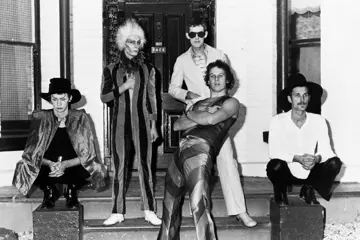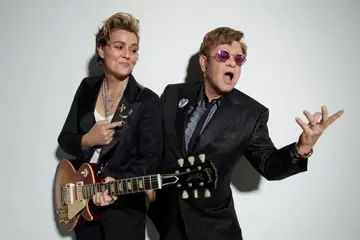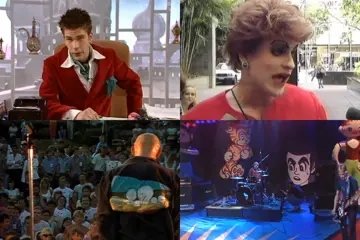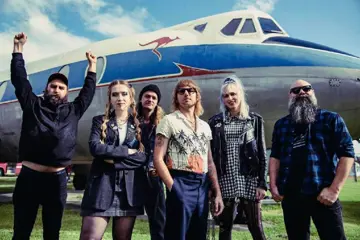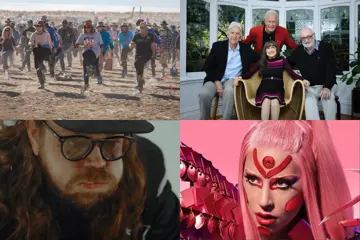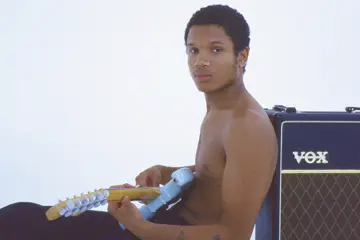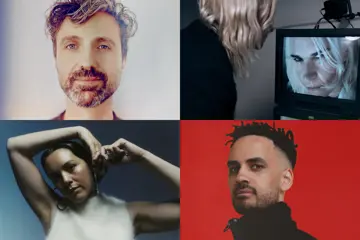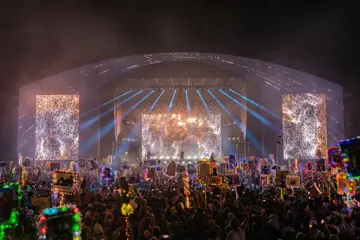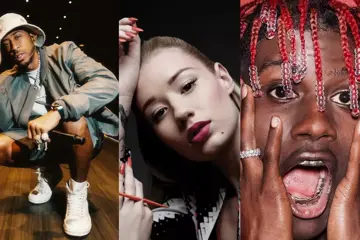Gallery Recordings has quickly become one of Australia’s most esteemed dance music focussed record labels. Breaking the likes of James Pepper, Pretty Girl, Roy Blues, AK SPORTS, Lex and many more in the Australian market, their distinct community focus and clear motive of platforming excellent Australian dance music has propelled them to one of the stalwart brands in the space.
Headed up by Angus Russell, the brand is not just a vehicle for releasing music but also spearheading some of the most exciting events the city has had. They launched with their Ribbon Cutter event featuring a slew of Sydney legends, before expanding into a huge second birthday party at the Oxford Art Factory which included the likes of Pretty Girl performing live, Cassettes For Kids, Tangela and many more. Their catalogue of events includes two slamming sold out parties at one of Sydney’s so called most iconic dance spots, The Bridge Hotel, for their parties Exhibition and Lex’s Ex Ex EP launch.
Their discography includes some of the most iconic and well known club releases of the past two years, including the viral and globally supported Three Drops by James Pepper and the label debut, Sun Phase from now adored producer Pretty Girl.
It’s no easy feat to launch a record label in today’s climate, with huge vinyl delays, a shifting streaming space and scarce revenue for musicians, but as Australian dance music propels to the highest of heights, Gallery Recordings is proving to be an enforcer in breaking and sustaining some of the best dance acts in Australia and showcasing them to the world.
Don't miss a beat with our FREE daily newsletter
They now turn to a pair of massive events in so called Sydney and Naarm/Melbourne titled Exhibit. Both line ups are beautifully curated, showcasing some of the label’s mainstay artists as well as some of the acts who have grown exponentially in the last two years. Bria, Club Angel, Clutch4Love, Madami, Mincy and Willo head up the Sydney event, Lex, Marly, Priya, Rino and Sam Alfred feature on the Melbourne line up and Dameeeela and Human Movement will perform at both. The Sydney event takes place on the 18th of November, followed by the Melbourne date on November the 19th. You can grab the event details via their website HERE.
To reflect on their journey so far and look forward to their events ahead, we chat to Russell about the challenges of starting a record label, the secret to artistic success and the future of Australia’s dance music market.
Did you imagine Gallery Recordings getting to this point? How proud are you sitting at this stage when you started it?
The short answer, if I’m being super honest is yes. I’m going through the process of achieving what I really want from Gallery. I left a great job at a pretty successful record label to start my own one with the vision of it being the best decision I’ve made in my life. It’s going relatively well, it could have gone better if there wasn’t two years of pause. At the same time I really stoked with where it's at.
We’ve got a really strong base and have built a really great community and have worked with so many awesome artists which I’m super grateful for. It still feels like it's just the start. I don’t see it as a hobby because I love music, this is the thing I know the best in my life so I want to make it my everything.
How has the strategy shifted from when you first created it to how you see it now? How did you envision it and how has that changed?
I don’t think I’ve wavered too much from the core, events and music. I’ve put out more music than what I thought I would have and done less events but mainly because of lockdowns. The core was pretty similar which is rare in this creative world. It’s still solely a club label, I probably thought I would have worked on something in a different sonic space but it’s important to stay true to the music that I know best and that I like the most, especially as you’re building an identity as a label in a pretty rock solid community in Australia, the dance scene.
What do you see the core idea being?
A focus on working with Australian musicians in electronic club music, but not exclusively. I wanted Gallery to be a brand, looking at Gallery as its own artist on the roster and build a brand and community alongside the artists we are working with. It’s definitely starting to pick up a lot more. Apart from that, being a home for that type of artist is the core.
Did you see a gap in the market of where Gallery could sit? Starting the label was a big life decision so what triggered the big jump to creating it?
I don’t think there was an obvious gap, there’s always been a bunch of really good dance labels in Australia. A small gap I did notice was that as dance music and global dance music was growing, especially now it is in such a prosperous spot and there wasn’t necessary a label doing full services across a range of mediums with a streaming platform strategy, strong marketing plans, global marketing teams and ideas, it was very much mostly commercial labels working with widespread appeal artists. There weren’t many labels that were offering a service that those labels did but to a more niche area of the scene that I could see was growing really quickly. That was the initiative and I saw there wasn’t really a label doing that. A lot of the labels that were doing that grew out of it.
If you’re an underground dance label in Australia the focus is mainly on servicing the heavy club scene and selling vinyl units to select DJs, whereas the commercial side was the total opposite. There really isn’t much in between.
That was what I noticed. The only thing that I haven’t quite been able to do is do the events to the scale I’ve probably wanted to do them. It’s important to recognise that takes so much time to do that and that takes time and trust and learning and community building.
A lot of the music you began working with came out during a COVID period, how difficult is it releasing and promoting dance tracks without real life, live momentum?
The first three releases were really difficult on that front. We had invested a fair bit of money into the artists and the projects because we knew that the tracks would travel really well live as they played them out. All of that dried up and a lot of those earlier releases were straight club records except for Roy Blues which was probably a little bit more headphone friendly. That was first year was extremely difficult but everyone was coming up with new creative ideas to engage with the music. We did live streams for every release and I put a much bigger focus in nurturing the relationships with all the other side of the industry including the streaming platforms who were feeding passive audiences not just the active club community. We put way more time into the PR side of things and pitching it to the correct people to get the conversation rolling. It was a surprisingly good way to get the music exposed relatively early as we put the groundwork into that part of the release in that world. It was also really hard, I questioned me doing it a lot.
Speaking on challenges, a lot of the releases have also coincided with vinyl. Talk us through the challenges of releasing vinyl and why you see it as super valuable to some releases in 2022?
I think it is a huge part of the identity of a label to have records. It’s something that every dance music fan engages with, they get so into the music that they start collecting records and that doesn’t ever end. I think there’s two sides to the music industry in dance music, the labels that focus mainly on digital and labels that focus mainly on physical. I wanted to bridge that gap which has been extremely tricky. Selling records in Australia is extremely difficult because they are so expensive. You have to get them pressed overseas if your distributor is over there, get them shipped here, then all the other costs involved mean that you basically have to sell them out to break even. They’re a great marketing exercise, people love wax. If an artist takes a photo of them holding a record that’s also great exposure for the release and the label. You can’t put a financial value on all of that but it is awesome. It’s very frustrating, but god it's fun at the same time.
There’s also a selfish element for both the artist and the label. It’s so cool to have physical, the music will literally last forever on wax.
We’ve done half the releases on vinyl, we haven’t done it for everything because sometimes it doesn’t make sense. For the releases that we’ve really gone after hard we’ve done it and I don’t regret doing any of them. We’ve almost sold out of most of them and there’s only a few that have more than a few left.
Talk through releasing James Pepper and Black Loops’ Three Drops, which was a huge club record. That almost felt like the polar opposite of our conversation about releasing a record during COVID.
That was a really fun release. It was really simple, two tracks and no remixes. We just had to focus all our attention on the one song. We had the perfect set up for it too, I was talking to James about that song about 9 months before it was released and I really wanted it. I thought it was the best thing he had ever made and then had to talk to Black Loops about it to get him over the line. Eventually we sorted out we were going to do it. Pepper had just been booked for Boiler Room and a whole heap of shows and they were the first shows after that initial long lockdown. He played it at the peak moment in his set and it went absolutely nuts. We got a lot of content off of that and a heap of ID requests too. We ran with all of that general demand and then packaged it up in a whole heap of promo vids. We had an amazing YouTube premiere. Surprisingly we had no Spotify pick up on release day or any DSP support, but naturally because of the groundswell it had through fans it really worked. It also had a second life three months after it released as we went into the European Summer. It got played by a bunch of DJs and a bunch of my favourites of all time. It was really cool and it’s just continued to grow.
What advice would you give to someone who has started to dabble in platforming dance music? As there are so many promoters and labels popping up that are probably inspired by what you’ve done.
I think to do a label properly you need to have the right structures in terms of how you actually release the music. There’s a lot of ways to release music, but theres a range of distributors out there that are really important to get in touch with. Also discuss things with the artist and distributor prior to launching thing because they probably are the best method for any label to get the music heard.
Also developing a brand and a community. If you clearly care about the music and the community and your ideas within the space are good you’ll be able to spread it as wide and as far as you can organically. There’s so many elements to it.
Building strong personal relationships with your roster is probably the most important part. If the artists have a really good experience that word spreads and people are more keen to work with you. They will also want to do more releases with you. I always try to ensure everyone that has worked with us has had a good experience. The other thing I didn’t realise as I’ve always been heavily involved on the artist side, is that a lot of dance labels and some big international ones which are popular for Australian artists to release on basically hit you up, get demos, say yes, send you a contract, send you masters, won’t talk to you for three months then hit you up and say, the EP is coming out on Friday, here’s the artwork for socials, then thats basically the end of the communication.
I think it's important to be heavily involved in communicating with the artist on the music and curating a release that will work in this market. Then every single aspect is communicated, I’m talking to the artist three times a week if the release is active. People genuinely appreciate that time and energy and its all strategic and considered instead of it being a strict system thats placed across an entire roster. Every artist is completed differently in the right way for their career.
You’ve now turned to two of your biggest events in Melbourne and Sydney. Talk through the curation of those line ups and who you are most excited to see on a Gallery stage?
I’m extremely pumped. I had a great experience at the second birthday event at Oxford Art Factory earlier in the year and the demand for tickets for that was phenomenal and it was such a joy to bring the majority of the roster together. I see the events running hand in hand with the label, I don’t see them as being the be all and all. It’s important to showcase the music and the artists you're working with, or an artist you’re likely to work with in the future in a space where they do their best work. Building those line ups was really fun. It’s a crazy time this time with so much going on. There’s a bunch of old friends and new faces that we’ve been in talks with for a while, and even some artists that might be releasing on Gallery soon.
Australian dance music has blown up so much in the past year, with so many acts growing exponentially. What do you think Australia needs to do to continue to foster that talent overseas and so that there is longevity in creating artists and moments like theirs?
It’s almost like the Flume wave all over again, there are so many artists making such awesome music and the rest of the world is looking at us and is really impressed. The best thing about it is that nobody in this community is overtly arrogant or competitive about it. Everyone is humble and wants to collaborate no matter their size. Everyone is open to people doing great work. That creates good competition and makes everyone get better and better and want to step it up. It’s so awesome, there’s so much incredible music that is getting released by people who haven’t yet made a huge name for themselves but they’re still incredible producers.
Everyone needs to keep working together, that’s whats got it to this point. There’s also something in the water, it’s so inspiring how many DJs there are that are capable of doing over 1000 tickets in each capital city. There’s probably 30 artists that could do that as a headline show that are all Australian and they all exist in a niche dance space.


